Letters of Note: Importance of preserving legacy
A recent auction of Rabindranath Tagore's letters for Rs5.9 crore shines the spotlight on the significance of preserving personal correspondence and documents
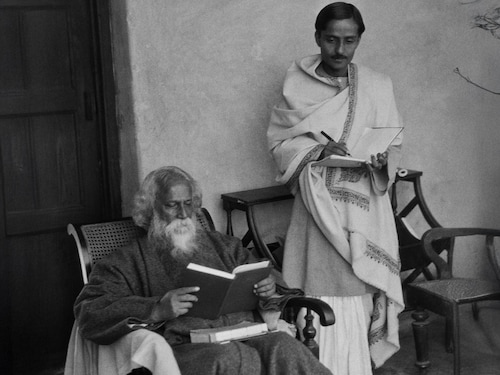

“It is a fine ship but I shall await my journey"s end before I pass judgment on her."
Prophetic as this statement might seem, written by Archibald Gracie onboard the Titanic on April 10, 1912, in reality it was just a four-page letter from a teenager to his friend while he sailed from England to the US. A few days later, in the early hours of April 15, the ship—it was on its maiden journey from Southampton in England to New York City in the US with about 2,224 people on board—sank in the Atlantic Ocean, killing an estimated 1,500 people. Gracie was one of the survivors.
This April, roughly 113 years later, Gracie’s letter sold at an auction in England for £30,000, a record price for any correspondence from the Titanic. Auctioneer Henry Aldridge and Son described it as “a truly exceptional, museum-grade piece" letters from Titanic survivors are extremely rare, and this one had never been on the market before.
Gracie’s letter is one among many famous ones around the world that have gone under the hammer this year alone: A letter from Mary Queen of Scots and her husband Lord Darn from the 16th century sold for £15,000 at an auction by Lyon and Turnbull in Edinburgh a letter from Albert Einstein penned in 1952 titled ‘On my participation in the atom bomb project’ was put up for auction by Bonhams in June John Lennon’s letter to his future wife Cynthia Powell in 1962 is being auctioned by Christie’s for an estimated £30,000 to £40,000 on July 9 a letter by Steve Jobs, written in 1974, expressing his wish to attend the Kumbh Mela, was auctioned for $500,312 this January by Bonhams.
Adding to this list is the recent auction of Rabindranath Tagore’s letters, which were auctioned by AstaGuru in June, for Rs5.9 crore. As part of its ‘Collectors’ Choice’ auction, Lot No 5 was an archival lot of 35 handwritten letters, with 14 envelopes that Tagore penned to sociologist Dhurjati Prasad Mukerji. Written between 1927 and 1936, the letters provide deep insights into the Nobel Laureate’s creative evolution, philosophical reflections, and transition from literary to visual expression. The development is especially significant because the lot was not a visual artwork but a manuscript-based archive, and yet it fetched the second-highest price ever for a Tagore creation at auction.
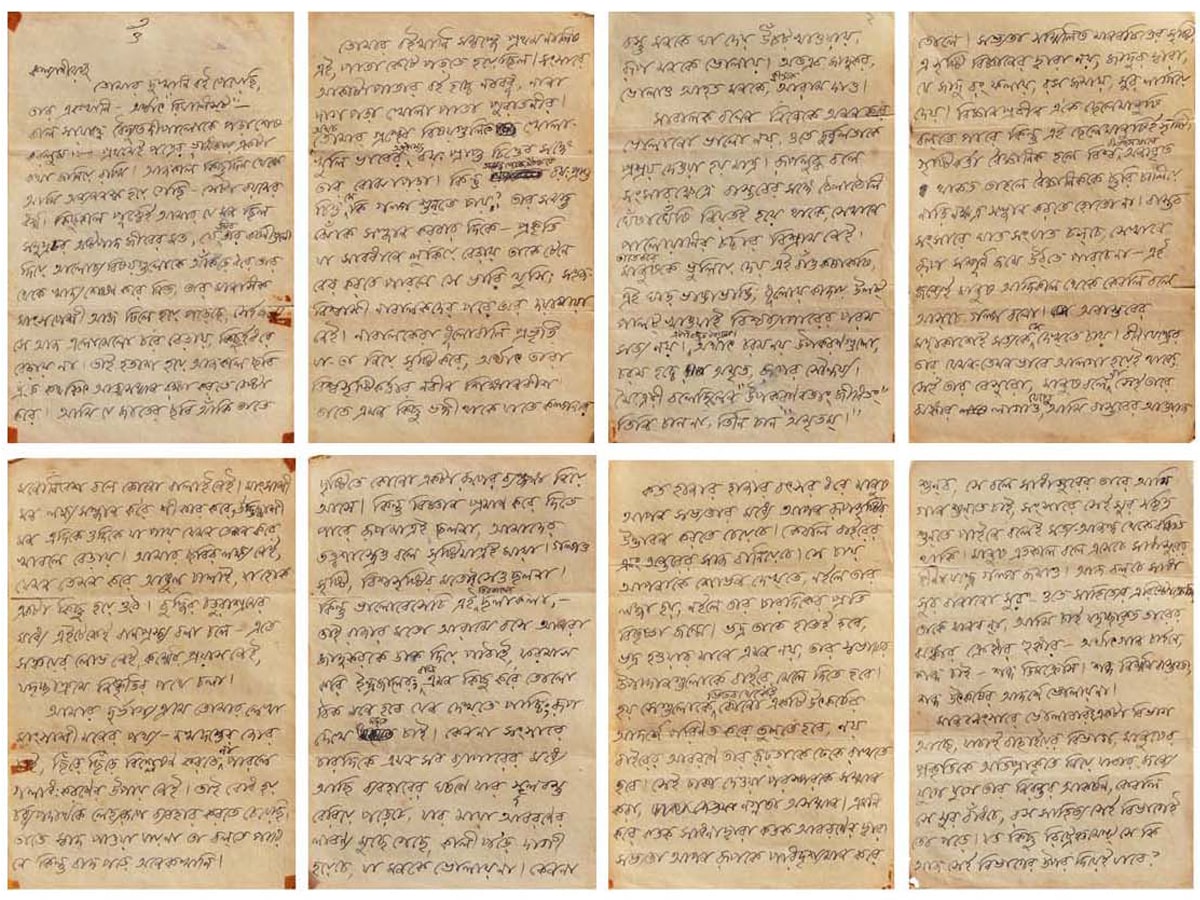 A set of 35 letters and 14 envelopes, written by Tagore, that fetched Rs5.9 crore at a recent auction Image: AstaGuru Auction House
A set of 35 letters and 14 envelopes, written by Tagore, that fetched Rs5.9 crore at a recent auction Image: AstaGuru Auction House
This is not the first time that AstaGuru has auctioned personal correspondence and memorabilia belonging to Tagore. However, “Unlike earlier offerings that focussed on standalone documents, this collection offers a rare and intimate record of a decade-long exchange between Tagore and Mukerji. These letters go beyond the realm of literary exchange they trace the artist’s inner landscape as he negotiates creative exhaustion, intellectual solitude, political disillusionment, and a decisive shift from poetry to painting," Manoj Mansukhani, director-marketing, AstaGuru Auction House, tells Forbes India. “What makes them particularly significant is their philosophical depth and vulnerability Tagore is not merely articulating ideas, he is questioning himself, defending his later works like Punascha and Shesh Saptak, and exploring the limits of language."
Twelve of these letters are written on distinct letterheads from places such as Santiniketan, Darjeeling, and aboard his houseboat Padma, visually chronicling Tagore’s geographic and intellectual journey. “This archive, more than any previously auctioned, reveals Tagore not only as a thinker and poet but also as a man in transition, confronting the shifting tides of his legacy," adds Mansukhani.
Over the years, AstaGuru has presented several significant works by Tagore, including a rare handwritten notebook composed in both English and Bengali. A letter from Tagore addressed to Abanindranath Tagore, his father’s nephew and a leading figure of the Bengal School of Art, was also sold in one of its past auctions. “Another important offering of such personal memorabilia were two sets of sketchbooks of artist Ganesh Pyne, both offered in our April 2023 ‘Masters Legacy’ Auction," says Mansukhani. “We remain dedicated to showcasing rare archival material that enriches public engagement with India’s cultural and artistic legacy."
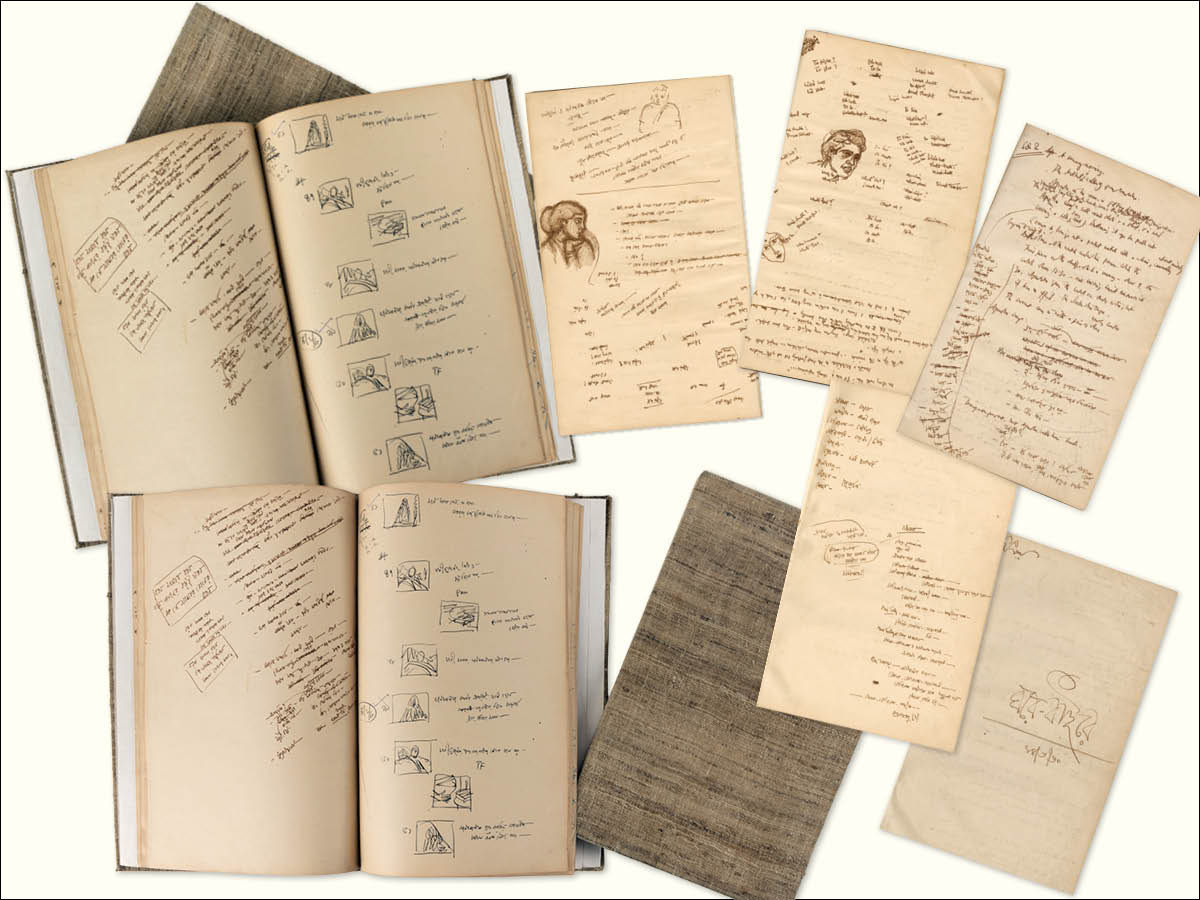 Filmmaker Satyajit Ray’s handwritten notebooks, with the original scripts of his films Ghare Baire and Samaptiimage: The DAG Archives
Filmmaker Satyajit Ray’s handwritten notebooks, with the original scripts of his films Ghare Baire and Samaptiimage: The DAG Archives
***
Also read: India"s architecture fans guard Mumbai"s Art Deco past
The auction of personal correspondence and memorabilia in India, however, remains an infrequent occurrence. Hefty price tags are rarer still. “Unlike the international auction landscape, where letters and personal memorabilia appear frequently, Indian auctions see fewer such offerings," explains Mansukhani. “This is partly due to the private nature of such collections, many of which remain in family hands or are legally protected under heritage laws."
For instance, many of Tagore’s belongings are archived at Visva-Bharati University, Santiniketan, which he founded in 1921, and where he lived for many years. His belongings and documents are also preserved at his ancestral home in Jorasanko, Kolkata. Rabindra Bhavana, the museum at the university, was established in 1942, with the intention of preserving hundreds of documents, including his (delete) in Bengali and English, correspondence, books and sketches. The museum includes Tagore’s personal library, personal belongings, his voice recordings and thousands of photographs, gifts and honours that he received from around the world.
Apart from collections (replace with: memorabilia) such as these being kept in private collections, it is also a fact that auction houses in India have conventionally focussed on modern and contemporary art that falls (replace with: do not fall) within the ambit of heritage laws. Echoing Mansukhani is Ashish Anand, CEO and MD of DAG, who says, “Most such sales have been private, I would hazard, since there are no specialised auction houses. Mostly, such memorabilia have formed a small part of auctions. But I anticipate growing collecting interest that will bring about changes and lead to the development of platforms that will change the landscape of archival material and collecting."
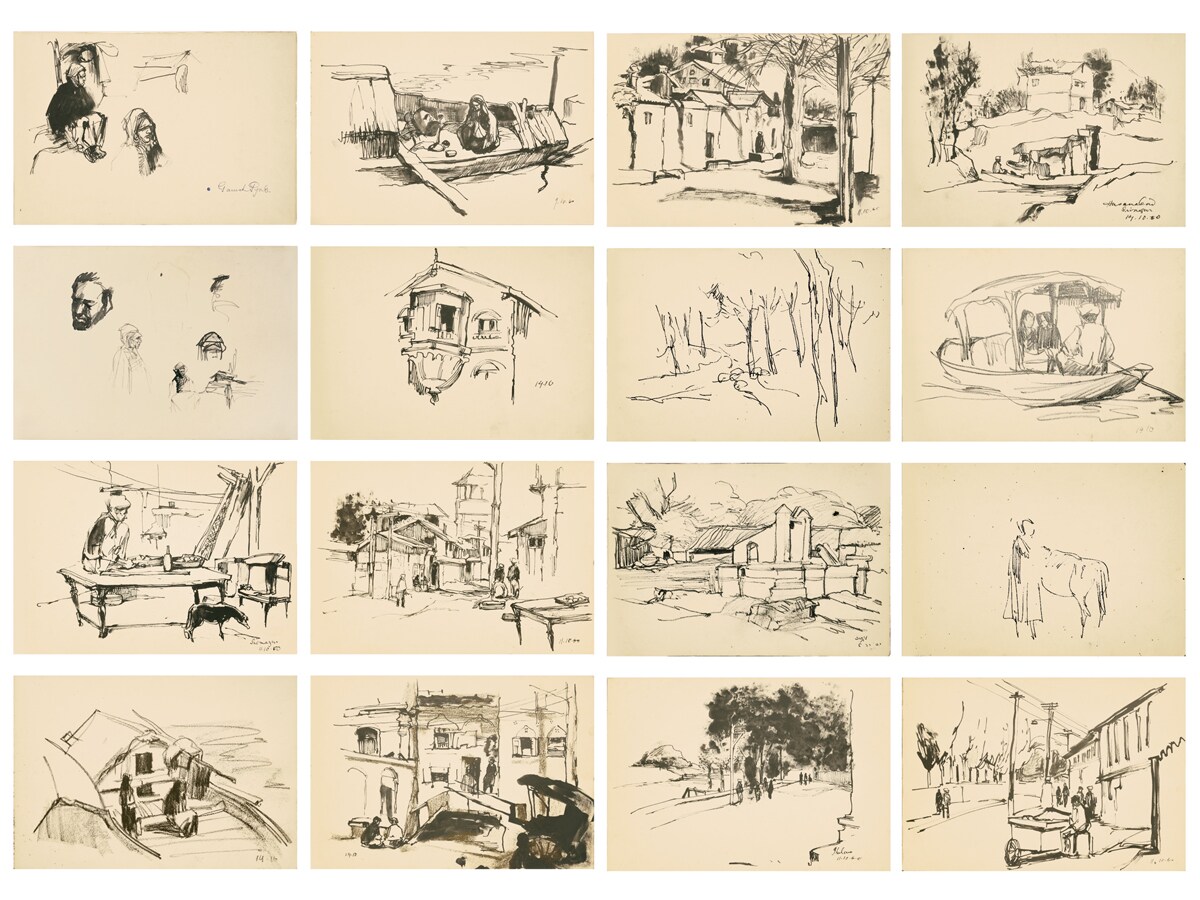 A sketchbook of contemporary artist Ganesh Pyne from 1958-59Image AstaGuru Auction House
A sketchbook of contemporary artist Ganesh Pyne from 1958-59Image AstaGuru Auction House
Anand adds that the preservation of archival material such as letters is important because they start important conversations, clear skewed understandings, create parallel dialogues, encourage multiple interpretations, and tethers us to our past and present in a way that is ephemeral without these reference objects and documents.
Despite the rarity of such auctions, Anand’s interest in archival material has persisted over decades, during which he has not only built a personal collection of archival material, but also taken DAG along the same route. In March 2023, DAG embarked on an ambitious project of creating India’s first, world-class, private, single-artist museum and cultural resource centre after it acquired the Kolkata home and studio of Jamini Roy, one of India’s most prolific and popular modernist painters. The plan is to restore the interiors of the house (add) in a way that will bring the artist’s workspaces and ethos to life. The museum will include galleries to house a permanent collection, as well as rotating exhibitions, a resource centre and a library, spaces for art workshops and events (change to: events), as well as a museum shop and café.
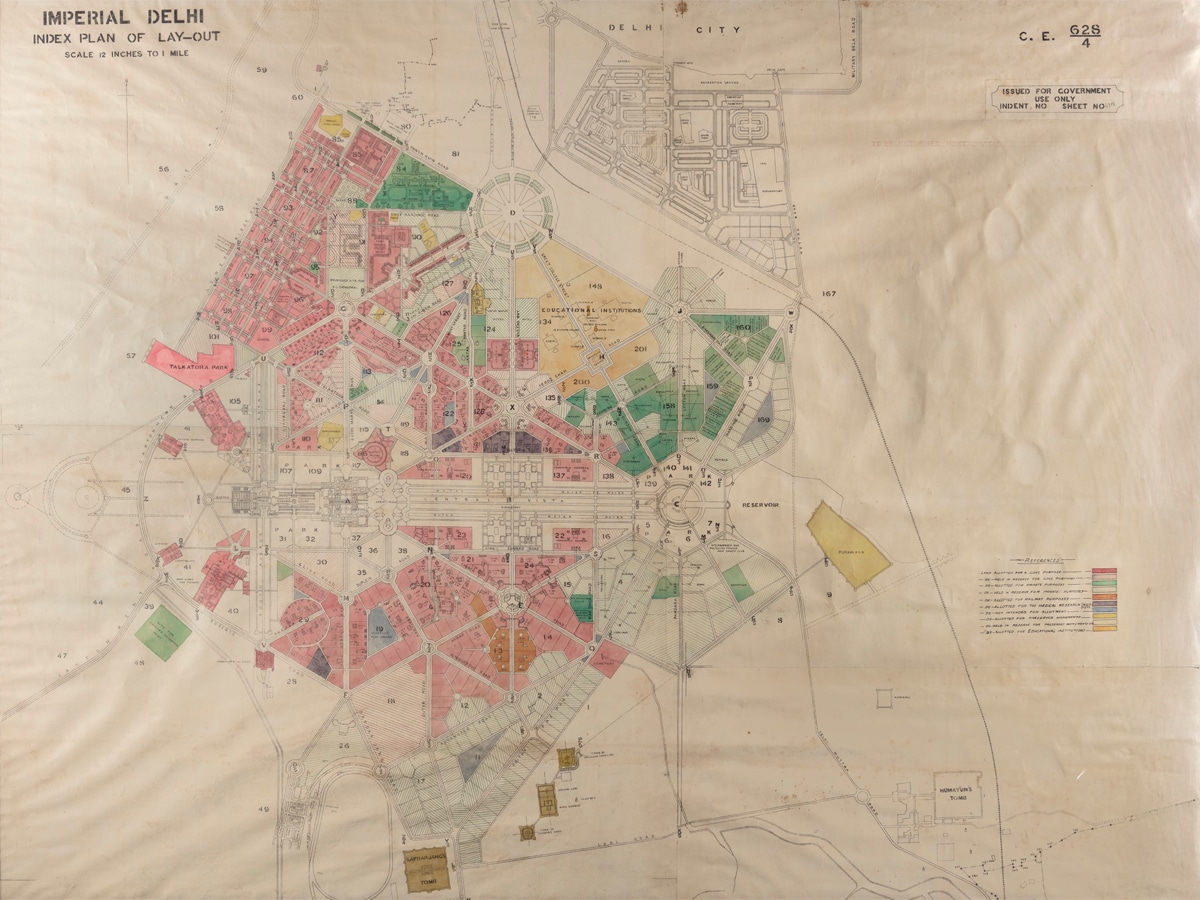 The original draft plans of Delhi by Edwin LutyensImage: The DAG Archives
The original draft plans of Delhi by Edwin LutyensImage: The DAG Archives
“India is just beginning to see the archival value of objects that have informed the lives of nationally recognised figures, personal memorabilia and the accouterments of the past and history," he says. “Culturally, we have not been attuned to documentation, especially with regard to future generations, and have not preserved as well, or as much, as the Western world has. It is only in recent years, with greater confidence as a nation and people, with growing wealth, and with our high aspirations, that we have the leisure and luxury to start rooting for, restoring and storing such documents and memorabilia."
When Anand started collecting art, he ensured that the collections included all associated archival materials, such as letters, photographs and clothes. The DAG Archive also has two of filmmaker Satyajit Ray’s handwritten notebooks containing the original scripts for Ghare Baire (1984) and Samapti from the anthology Teen Kanya (1961)—both cinematic adaptations of literary works by Tagore. “Another one to note are the Albert Edward Peter Griessen archives, which includes a repository of architectural materials, notably featuring the original draft plans by Edwin Lutyens," adds Anand. “This collection provides critical insights into the urban planning and architectural development of New Delhi."
He also highlights Nicholas Roerich’s Banner of Peace, the prototype insignia or symbol for protecting architectural and artistic wonders of the world that he had proposed before the United Nations was formed. “That is a vital piece of human history. There are manuscripts that date back centuries, each a brilliant masterpiece. You collect them as a custodian for their future safekeeping—that is the single motivator as far as I am concerned."
First Published: Jul 08, 2025, 14:24
Subscribe Now